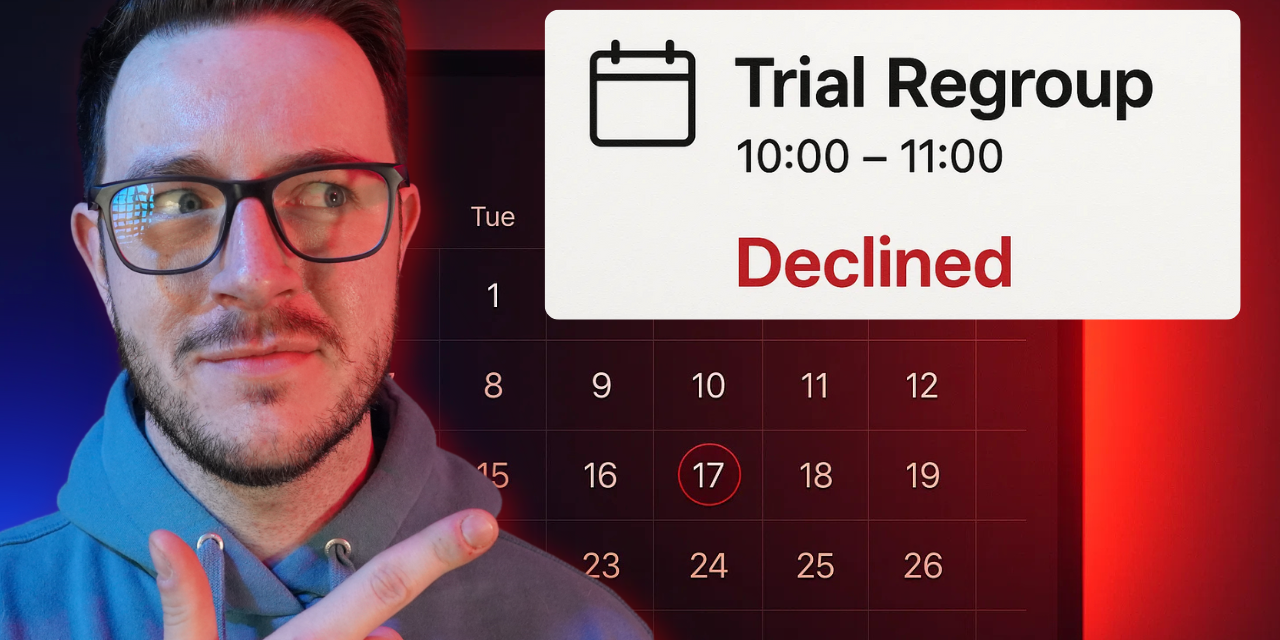
Proof of Concept? More Like Proof of Procrastination. Control the Trial or Lose the Deal.

Most software trials are DOA (dead on arrival)
Your buyer clicks around like it’s a playground. You lose control. Then they go quieter than a CMO when asked to show marketing’s Q1 pipeline contribution.
Look, if you’re handing out trials without a real plan, you’re setting yourself up to lose.
Today, I’m gonna show you exactly how to handle trial requests the right way, keep your deal alive, keep your buyer engaged, and maybe even get them more excited to move forward than you are to close the deal.
Here’s the brutal truth:
Much of the time, when a buyer says “Can we get a trial?”, what they’re actually saying is:
“We don’t want to make a decision just yet. So we’re gonna ask for a trial to buy time to avoid telling you that we don’t see the value here.”
You naively yeet over a free log in, the buyer might log in once or twice, poke around with zero urgency, zero plan, and zero accountability, get overwhelmed, and guess what?
When it’s time to regroup, they’re “still evaluating” or “this is no longer a priority”.
aka they forgot about you entirely and have taken no steps to move closer to a decision because they never planned on moving forward to begin with.
But it doesn’t have to be this way.
This used to be a massive problem for me as well. A request for a trial was the kiss of death for my deals.
But I implemented this STRICT 5-step process to make sure I wouldn’t keep making the same mistakes.
STEP 1: Validate The Need
Someone asks for a trial, the first question out of your mouth:
“What would you be hoping to achieve during the trial?”
If they give you some fluffy “We just wanna explore” BS, slam those brakes.
You want measurable, specific outcomes.
If they can’t define success, they won’t recognize it when they see it.
In these cases, you can use a talk track like:
“Oh, I’m sure that could be helpful, but I find a lot of the time if we don’t know what we’re looking to achieve and test, these things often end up being an exercise of clicking around aimlessly… So, how about this, we try to make this as real as possible and accomplish some of what you’re looking to do for the full rollout of the tool?”
If it’s an accounting tool you sell, maybe that’s being able to generate an expense report.
If it’s a CAD tool you sell, maybe that’s the team creating some product designs.
If it’s a call recording software you sell, perhaps it’s the team using it on their calls for a week to see what insights they gain that they don’t have right now.
They have to USE the product, not just look at it.
If they’re still pushing back, that’s a sign that a different objection is lingering in their mind that still needs to be addressed.
STEP 2: Create a Trial Plan
If they can define outcomes? Now you’re in business.
Build a mini project plan:
- Clear MEASURABLE goals
- Clear timeline (Ideally a short one, time kills all deals)
- Clear end users involved
- Clear check-in meetings (start, midway, and end)
And here’s the magic question you ask before kicking it off:
“If we achieve these outcomes, will you ready to move forward?”
If the answer isn’t a clear ‘yes’, you don’t even start the trial.
STEP 3: Create The Trial
You’ll now create a trial instance for your customer
This is best done with everything set up and ready for them to go.
Don’t burden them with the technical setup, especially if they don’t have a technical background.
Now, keep in mind that once you’ve created the trial environment, you’ll also want to ensure that users feel comfortable using it, especially if the trial involves multiple end-users.
This is where a trial kick-off call can help you train them, address any questions, and ensure they’re set up for success.
STEP 4: Track Engagement
This isn’t a ‘set it and forget it.’
Watch usage: Are they logging in? How often? Can you see how much they’ve accomplished?
Have pre-planned check-ins, provide materials like video walkthroughs and customer support articles that are ideally tracked, so you can see if they are consuming them
Try to single-thread as many of these check-ins as possible; this allows you to build broad and deep relationships with all those participating in the trial, making them more willing to vouch for you and your solution later on.
If they’re not engaging early, you intervene early, before it dies quietly.
STEP 5: Regroup and Close
At the end, you should have a call scheduled
So don’t just ask ‘So… what do you think?’ like some nervous teen asking someone out on a date.
Walk them through what you achieved versus what they asked for.
Consider including stats you measured, feedback you may have gotten from the users who were testing, and any outputs they created with the product.
And of course, go for the close:
You said these outcomes mattered. Do you feel like you achieved them?
Yes – In that case, are you ready to move forward like we agreed?
No – Alright, what was missed?
If so, proceed with the deal’s final steps, including the contract, signature, commission payout, and delebratory bottle of bubbly.
Now, all of that may seem like a lot of work, and it is, and that’s why I believe the best trial process is avoiding a trial to begin with.
If you find your buyers are always begging for a trial, it’s likely because you haven’t done the necessary work to earn their buy-in yet.
A solid discovery, a clear demo tailored to their use case, and a little social proof go a long way in inspiring confidence in your solution.
Good selling makes trials feel unnecessary. Lazy selling makes them feel mandatory.
Pick your lane, diagnose the real problem in your pipeline, and fix that.
































